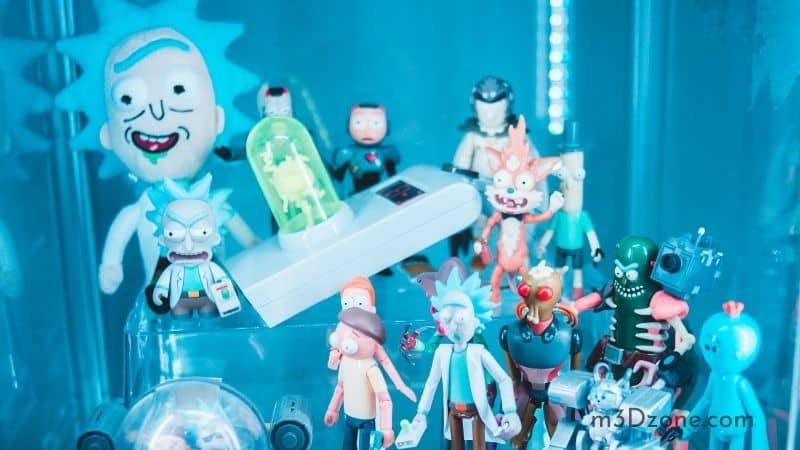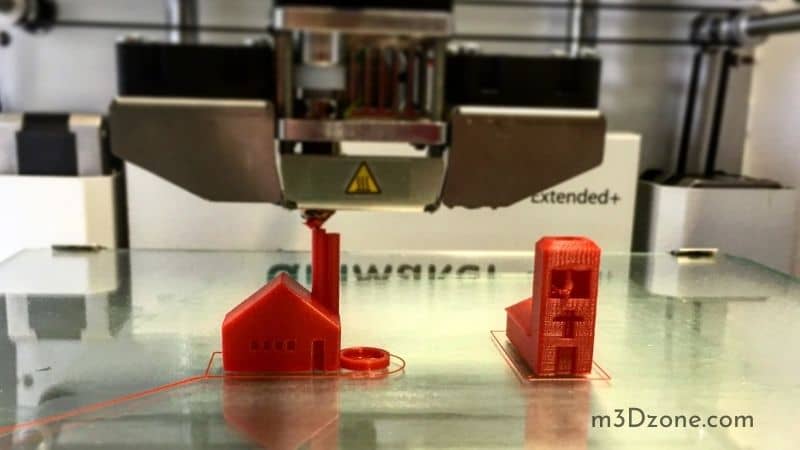Are your 3D prints warping? Do you have curious kids in the house and want to keep them and your printer safe? Do you want to avoid dust and humid conditions from shortening your printer’s shelf life? An enclosure can help you handle these issues.

ABS filaments tend to warp more than other printing materials post-processing. With an enclosure, you can maintain the right temperature for quality prints. Moreover, enclosures trap harmful fumes, making them a crucial requirement for ABS printing.
This article shares the importance of enclosures and how to make one on your own. Without further delay, let’s dive in.
Quick Navigation
Do 3D Printers Require Enclosures?
These machines require enclosure for optimal operation. Here are several reasons to consider getting an enclosure for your 3D printer.
-
Better Print Quality
An enclosure can offer a more suitable printing environment. It prevents drafts and tends to retain heat, providing temperature stability. While maintaining excess heat has its downsides, stability and draft-free conditions are a great combo.
-
Noise Reduction
Though covering your printer isn’t the sole solution to curbing noise, it can help minimize the nuisance in an environment requiring silence.
-
Hardware Protection
Do you have pets or little kids in your home? Are there loose objects within your printing room? An enclosure can help you secure your 3D printer’s moving parts from interference or damage.
-
Clean Conditions
Enclosures aid in dust prevention. They also assist in humidity control and air filtering for optimal conditions.
-
Wire Management and Device Mounting
Installation and cabling devices like webcams and LED lights are less cumbersome and neater with a suitable enclosure.
-
Better Storage
An enclosure allowing easy machine mobility or stacking is essential in limited spaces or in areas where printing is occasional. Getting a suitable working height and having wheeled bases can make work effortless.
It’s impractical trying to accomplish everything with your enclosure. A wise decision is carefully choosing features that fit your requirements. This is vital if you want to save on costs.
Can ABS Plastic Be 3D Printed?
Although this filament is more challenging to print with than PLA, it retains popularity amongst 3D printing professionals.

Here are some of the benefits that lead many people to use it:
Sturdiness
ABS has excellent mechanical properties, especially in comparison to PLA. It’s more rigid, more durable, and more ductile, making it an ideal material for “wear and tear” operations. ABS can elongate better at breaking point and can withstand high temperatures, unlike PLA.
Post-Processing
ABS is suitable for multiple post-processing touches. You can paint ABS parts with acrylic paints, sand, glue, mill, drill, and cut them. It dissolves in acetone, so you can use this on its surface to get a glossy finish.
New Materials
This filament creates equipment with enhanced characteristics like biocompatibility, translucency, and conductivity. You can also mix ABS with other materials to improve mechanical properties.
For instance, combining a polycarbonate with ABS results in PC-ABS, which has superior heat resistance and strength.
Accuracy
ABS prints have typically accurate dimensions with minimal imprecision not exceeding 1.2 mm. However, it’s good to remember a part’s complexity, amount of power supply, and your printer’s settings also affect accuracy.
Is 3D Printing With ABS Dangerous?
Most 3D printing procedures use plastic filaments from substances like ABS. Prolonged exposure to the resultant fumes might have detrimental health implications. Hazardous gases and vapors contain UFPs (ultrafine particles) and VOCs (volatile organic compounds), with ABS and PLA having the largest emissions.
UFPs have a size ranging from one to 100 nanometres. Being similar-sized to biological molecules, they get immediately absorbed by living organisms. Inhaled UFPs can reach your liver, blood, and heart. Exposure to high concentrations of UFPs can result in dangerous health effects.
VOCs have high vapor pressures at room temperature. Because of this, many molecules can evaporate and occupy the surrounding air. 3D printing substances are a source of VOCs like cyclohexanone, styrene, butanol, ethylbenzene, to name some.
Heating ABS at 3D printing temperatures results in excessive VOC emissions. According to a study, ABS contains a particle concentration 33–38 times higher than that of PLA. Some health hazards associated with VOCs include throat, nose, eye irritation, organ damage, and nausea.
However, these adverse effects are avoidable with proper ventilation.
Can You Print ABS Without a Heated Bed?
Whether or not you can print ABS without a heated bed is a question many people ask. A heated bed is necessary when using this filament because ABS shrinks while cooling.

Without the right print bed temperature, your print’s bottom tends to cool at an unequal rate to the rest of the print. As a result, it can cause your ABS print to warp. So, the simple answer is yes, but be ready to face the problem of warping.
Does ABS Need an Enclosure for 3D Printing?
Although you can print ABS without an enclosure and only on a heated bed, your success rate is lower in this case.
Many other 3D printing filaments are okay to print without an enclosure due to their different mechanical and chemical properties from ABS. The main problem with ABS printing minus an enclosure is your prints warping or curling around the edges due to rapid cooling.
During 3D printing, materials need heating to high temperatures for proper extrusion through the nozzle, but soon after, they start cooling. The temperature change leads to a physical reaction causing the material to shrink.
Typically, when you 3D print a part, the model is slightly smaller than what you expect. So, most individuals add 2% more dimensions while printing to get the intended size.
Without an enclosure when 3D printing ABS, the incidence of rapid temperature changes heightens. This is because the temperature-regulated environment provided in an enclosure isn’t present.
Averagely, ABS needs nozzle temperatures of approximately 300-degrees-Celcius more and up to 500-degrees Celsius more print bed temperatures than PLA.
The latest printers feature heated chambers that permit ABS printing with better outcomes. If your machine lacks this chamber, getting an enclosure is crucial in maintaining a constant temperature throughout printing.
Another advantage of having an enclosure is trapping unpleasant ABS fumes from affecting you and the environment.
Upon completion of the printing process, you can handle post-processing without much struggle. Always remember to 3D print ABS in an area with good airflow.
How to Build an Enclosure for Your 3D Printer
There are various questions to consider before you pick your enclosure’s design. How much money are you planning to spend? What aesthetics are you looking for? Do you have kids that you want to keep out, or is the printer for personal use?
There are various approaches to making your 3D printer. A 3D printer enclosure is essentially a box. So, with a stable table to place your 3D printer, all you need is a sizable cardboard box to invert over your machine and print bed.
You might want to cut out windows and use acrylic sheets on them to allow you to see within. Moreover, have a light source and smoke detector inside the enclosure. The idea is to make sure you observe caution. Whenever you need to access the printer, simply remove your box.
You can even search for a benchtop tent, and you are good to go. One thing to note is that benchtop tents are highly flammable; hence people using these should observe more caution or use glass or metal instead.
Another option is to use a transparent plastic container design. Cut holes for cable management, then invert it like a cardboard box.
Conclusion
If you are aiming for precise prints, it’s necessary to get an enclosure and have the right heat level in your print bed, plus good airflow. Not to mention, enclosures immensely lower your risk of exposure to carcinogenic components.
Recommended Reading
How to Clean a Glass 3D Printer Bed
Cleaning a glass 3D printer bed requires you to slightly heat the printer bed. You will then apply a cleaning solution of your choice and ...
3D Printing Molds for Casting [Step by Step Tutorial]
3D printing molds for casting is rising in popularity in the 3D printing industry. It helps you to acquire various 3D printed products. Let's see how it's done!
Is PLA Recyclable? Recycle Your 3D Printer Filament
Is PLA recyclable? Yes! You can recycle PLA plastic filament. BUT don't mix it with other types of everyday plastic because its melting point remains lower...
